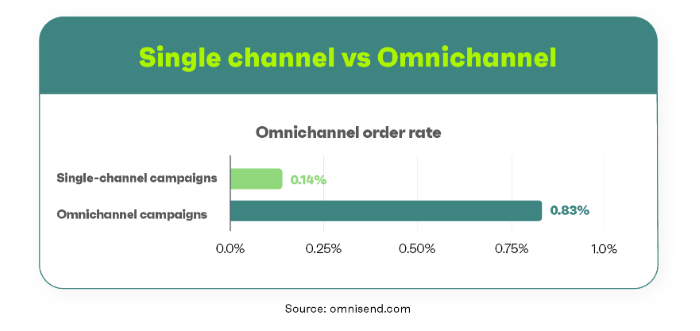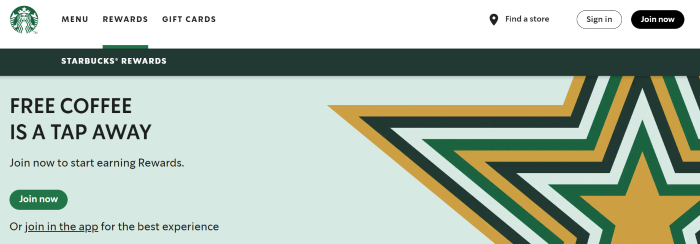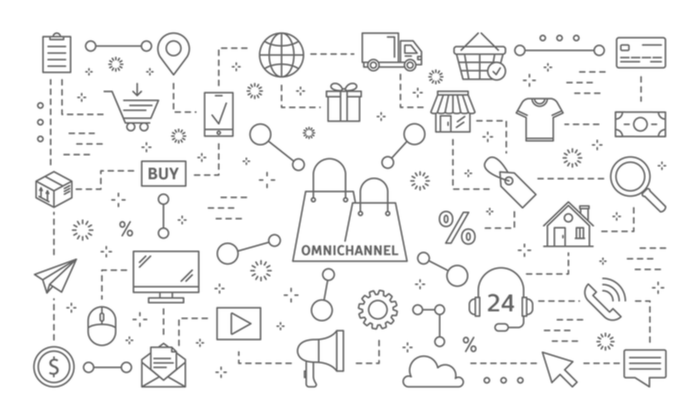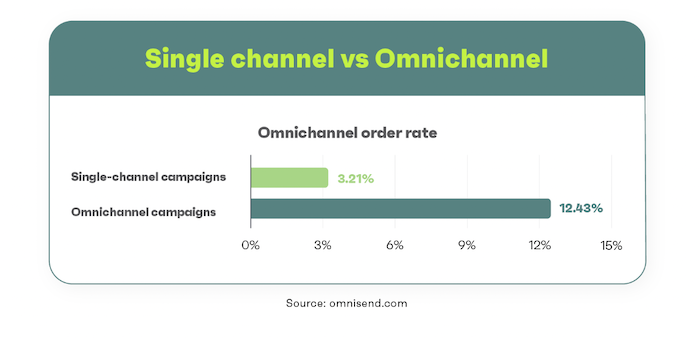Omnichannel Marketing: How You Can Use it to Reach More People Than Ever Before
By Neil Patel

Examples of Omnichannel Marketing
Today, most brands realize customers engage with them on multiple channels. However, implementing an omnichannel strategy can feel overwhelming. Let’s look at a few brands that are getting it right.
Starbucks
Starbucks is more than just an in-person coffee shop and remote working haven.
They also offer online ordering through their mobile rewards app. Customers can upload money to the app, place curb-side orders, and even claim rewards.

How do they improve omnichannel with their app?
First, Starbucks offers rewards to app users, which encourages them to use the app. The app regularly pushes special rewards, such as earning extra points for ordering in the next two days or trying a new drink.
When customers use the app, it allows Starbucks to track in-store behavior—data they wouldn’t have access to otherwise. The app then offers recommendations and promotes seasonal drinks to drive sales.
Disney
Disney is a pioneer in omnichannel marketing. The brand has expertly navigated combining in-person, online, and television marketing for decades.
Marketing used to be a lot less complicated.
Today, users interact with brands on multiple devices and separate platforms—often simultaneously. Even in-person and online shopping, which used to be distinct events, are no longer completely separate due to the rise of trends like buy-online-pick-up-in-person.
Consumer expectations are shifting as well.
Today’s customers expect to receive the same service and brand experience whether they’re scrolling Facebook, reading their email, or shopping in a store.
How do you give your customers what they want and deliver a better experience? With omnichannel marketing.
What Is Omnichannel Marketing?
Omnichannel marketing provides users with a seamless marketing experience across all platforms, channels, and devices throughout the marketing funnel. The core goal of omnichannel marketing is to place the customer at the center of all marketing strategies and provide a consistent, seamless experience.
Omnichannel marketing is growing in popularity, with 67 percent of e-commerce companies saying omnichannel is “very” or “quite” important to their business.
While implementation of an omnichannel strategy can vary between businesses, it can be identified by key goals, including:
- personalized content and ads informed by past interactions with specific users
- consistent branding, tone, and vision across all platforms
- allowing users to continue their purchase path seamlessly, even if they switch platforms or devices
Benefits of Omnichannel Marketing
When implemented correctly, omnichannel marketing offers a host of benefits for both brands and their customers. According to Invesp, companies using omnichannel strategies retain 89 percent of their customers, while brands that don’t keep just 33 percent of their customers.
Several other benefits include:
- Improved user experience: Omnichannel marketing centers the customer experience, providing a better experience for customers no matter where they interact with your brand.
- Better brand awareness: Creating a consistent experience across platforms (including in-store) makes it easier for customers to recognize your brand.
- Improved business data: Omnichannel tracks interactions across platforms, channels, and even in-person sales. This highlights which campaigns (and channels) are most effective at driving leads and sales.
- Increased sales and revenue: Marketers that use three or more channels in one campaign see a 287 percent higher purchase rate. Omnichannel campaigns also have a higher order rate.
Examples of Omnichannel Marketing
Today, most brands realize customers engage with them on multiple channels. However, implementing an omnichannel strategy can feel overwhelming. Let’s look at a few brands that are getting it right.
Starbucks
Starbucks is more than just an in-person coffee shop and remote working haven.
They also offer online ordering through their mobile rewards app. Customers can upload money to the app, place curb-side orders, and even claim rewards.

How do they improve omnichannel with their app?
First, Starbucks offers rewards to app users, which encourages them to use the app. The app regularly pushes special rewards, such as earning extra points for ordering in the next two days or trying a …read more
Source:: Kiss Metrics Blog






